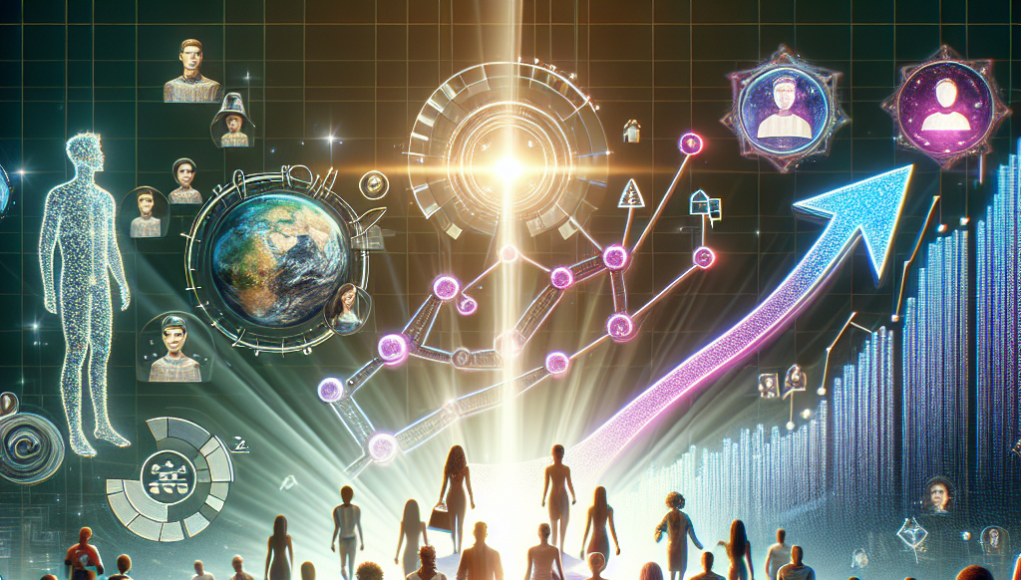In the fast-evolving digital landscape, the influencer industry is undergoing significant transformations driven by technological advancements, shifting audience dynamics, and the emergence of new platforms. As we look to the future, it’s essential to understand these trends that are poised to shape the next wave of influencers. This article delves into the emerging technologies transforming influencer dynamics, shifts in audience engagement and expectations, and the impact of new platforms on influencer reach.
Emerging Technologies Transforming Influencer Dynamics
Emerging technologies are redefining the way influencers create content and engage with their audiences. Augmented Reality (AR) and Virtual Reality (VR) are at the forefront of this transformation. These technologies allow influencers to craft immersive experiences, making product demonstrations and storytelling more engaging. AR filters on platforms like Instagram have already gained popularity, and we can expect influencers to leverage VR for virtual meetups and events, providing followers with novel interactive experiences.
Artificial Intelligence (AI) is another game-changer, offering influencers data-driven insights to tailor content to their audiences. AI-powered analytics tools enable influencers to understand their followers’ preferences and behaviors more precisely, allowing for more personalized content. Moreover, AI-generated content, such as deepfake technology, presents new opportunities and ethical considerations for influencers in creating authentic yet innovative content.
Blockchain technology is also making waves in the influencer space by enhancing transparency and trust. With blockchain, influencers can verify their authenticity and followers, reducing the prevalence of fake followers and fraudulent activities. This technology also facilitates secure transactions and collaborations, making partnerships between brands and influencers more efficient and trustworthy.
5G technology is set to revolutionize the influencer industry by enabling faster internet speeds and lower latency. This advancement allows influencers to stream high-quality live content seamlessly, enhancing real-time engagement with their audiences. As 5G becomes more widespread, influencers can explore new content formats, such as live shopping experiences and interactive storytelling, further blurring the lines between digital and physical worlds.
Voice technology, powered by smart speakers and voice assistants, is also influencing how content is consumed. Influencers are beginning to explore voice-based content, such as podcasts and voice notes, to reach audiences who prefer audio over visual content. This trend opens up new avenues for storytelling and engagement, allowing influencers to connect with their followers in more intimate and accessible ways.
Finally, the rise of the Internet of Things (IoT) offers influencers opportunities to integrate smart devices into their content. From smart home gadgets to wearable technology, influencers can demonstrate products in real-life scenarios, providing followers with practical insights and recommendations. IoT also enables influencers to gather real-time data on product usage and feedback, enhancing their ability to create relevant and impactful content.
Shifts in Audience Engagement and Expectations
As the influencer landscape evolves, so do audience engagement patterns and expectations. Today’s audiences are more discerning and value authenticity over polished perfection. They seek genuine connections with influencers who share relatable stories and experiences. As a result, influencers are increasingly focusing on transparency and vulnerability in their content, fostering deeper connections with their followers.
Interactive content is becoming a key driver of audience engagement. Audiences now expect to participate in the content creation process through polls, Q&A sessions, and interactive challenges. Influencers who embrace this trend can build stronger communities by involving their followers in decision-making and content planning, creating a sense of ownership and belonging.
The demand for niche content is on the rise as audiences seek specialized information and communities that align with their interests and values. Influencers who cater to niche markets can cultivate dedicated and loyal followings by providing in-depth knowledge and tailored content. This shift towards niche content also opens up opportunities for micro-influencers, who often possess expertise in specific areas and can connect with audiences on a more personal level.
Ethical considerations are increasingly influencing audience expectations. Followers are holding influencers accountable for their actions and affiliations, demanding transparency in brand partnerships and social responsibility. Influencers who prioritize ethical practices and align themselves with causes that resonate with their audience can build trust and credibility, setting themselves apart in a crowded market.
Audiences are also becoming more conscious of the time they spend online, leading to a preference for meaningful and concise content. Influencers need to adapt by delivering value quickly and efficiently, whether through bite-sized videos or succinct written content. This shift challenges influencers to capture attention and convey messages effectively in an era of information overload.
Finally, the rise of digital detox and mental health awareness is shaping audience expectations. Followers are increasingly valuing influencers who promote well-being and balance, encouraging breaks from social media and advocating for mental health. Influencers who embrace this trend can foster positive relationships with their audiences by promoting healthy habits and authentic self-care practices.
New Platforms and Their Impact on Influencer Reach
The emergence of new social media platforms is reshaping how influencers reach and connect with their audiences. TikTok, with its short-form video format, has become a breeding ground for viral content, allowing influencers to gain rapid visibility and reach diverse audiences. Its algorithm-driven discovery process enables even new influencers to achieve significant reach, democratizing the influencer landscape.
Clubhouse, the audio-based social network, has introduced a new dimension to influencer engagement. By hosting live discussions and panels, influencers can connect with audiences in real-time, fostering dynamic conversations and networking opportunities. This platform allows influencers to showcase their expertise and build communities centered around shared interests and dialogues.
Twitch, primarily known for gaming content, is expanding its reach beyond gaming, attracting influencers from various niches. Its live streaming capabilities offer influencers the chance to interact with audiences in real-time, creating engaging and spontaneous content. Twitch’s monetization options, such as subscriptions and donations, provide influencers with diverse revenue streams, making it an attractive platform for content creators.
The rise of decentralized social networks, such as Mastodon and LBRY, is challenging the dominance of traditional platforms. These platforms prioritize user privacy and content ownership, appealing to audiences seeking alternatives to mainstream social media. Influencers who embrace decentralized networks can tap into communities that value transparency and independence, expanding their reach to audiences wary of centralized control.
E-commerce platforms are also becoming influential in shaping influencer reach. Platforms like Amazon Live and Instagram Shopping enable influencers to seamlessly integrate product recommendations with purchasing options, streamlining the consumer journey. Influencers who leverage these platforms can enhance their reach by combining content creation with direct sales, offering followers a convenient shopping experience.
Finally, the integration of social media with virtual spaces, such as the metaverse, is opening new frontiers for influencer reach. As virtual worlds become more immersive and interconnected, influencers can create unique digital experiences for their audiences. From virtual concerts to digital fashion shows, the metaverse offers influencers innovative ways to engage with followers, expanding their reach beyond traditional boundaries.
The future of the influencer industry is being shaped by a confluence of emerging technologies, evolving audience dynamics, and the rise of new platforms. As influencers navigate this changing landscape, they must adapt to technological advancements, meet shifting audience expectations, and leverage new platforms to expand their reach. By embracing these trends, the next wave of influencers will continue to redefine how we connect, communicate, and consume content in the digital age.










